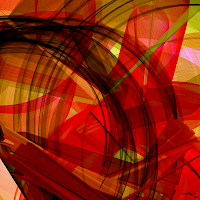I tell you this, friends: I am a long-time lover of the monochrome bitmap (if we're being picky about the language, all bitmaps are monochrome -- anything with more than one bit per pixel is a pixmap, but that's neither here nor there). It feels sometimes like I have used just about every monochrome paint program of the last 30 years; on the 68000 Mac I've done MacPaint and Superpaint and this paint and that paint, on the Atari ST I've done Degas and PrismPaint and Pixart and Artis, on the PC I've done MS Paint and GEM Paint and a gaggle of others and through all this I've come to find that absolutely none of these work exactly like I want them to*. So! Something I've wanted to do for a long time is write-up in whatever language was convenient a very simple monochrome paint program that
did work exactly like I wanted it to. This past weekend, that's precisely what I started doing.
 |
| * I'm happy to note, however, that in the area of indexed-colour paint programs I find great satisfaction in GraFX 2 which, after having been in development limbo for a time is now actively being maintained/updated again. Hoorah! |
When I've the luxury of more time (and inclination) I'll write all about how that's progressing, but for the moment, this exciting bulleted list will have to suffice:
- It's being written in ActionScript
- It's coming together quickly
- It's already quite usable (for me, though the UI is spare and cryptic), and
- I've no regrets about spending all of last Saturday working on it instead of schoolwork.
As I was doodling with my Doodler (that's its name -- I'm trademarking it! Mine! *hiss*) I thought it might be interesting to print off one of the drawings and paint on it to create an under-painting that the bitmap would then be composited back on top of. Sort-of a bitmap-painting-bitmap sandwich. I hastily performed the experiment, and I'm not quite sure how I feel about the result. Below you can see the three stages. The astute observer will note that the last picture, with the bitmap overlaid, has been reduced to 16 colours. This was done because the, um,
digitalness of the bitmap was, to my eyes, just too incongruous with the organic qualities of the paint. They looked terrible together. But flattening the colour space, introducing that banding effect of a limited palette, helped the two gel, I think.






